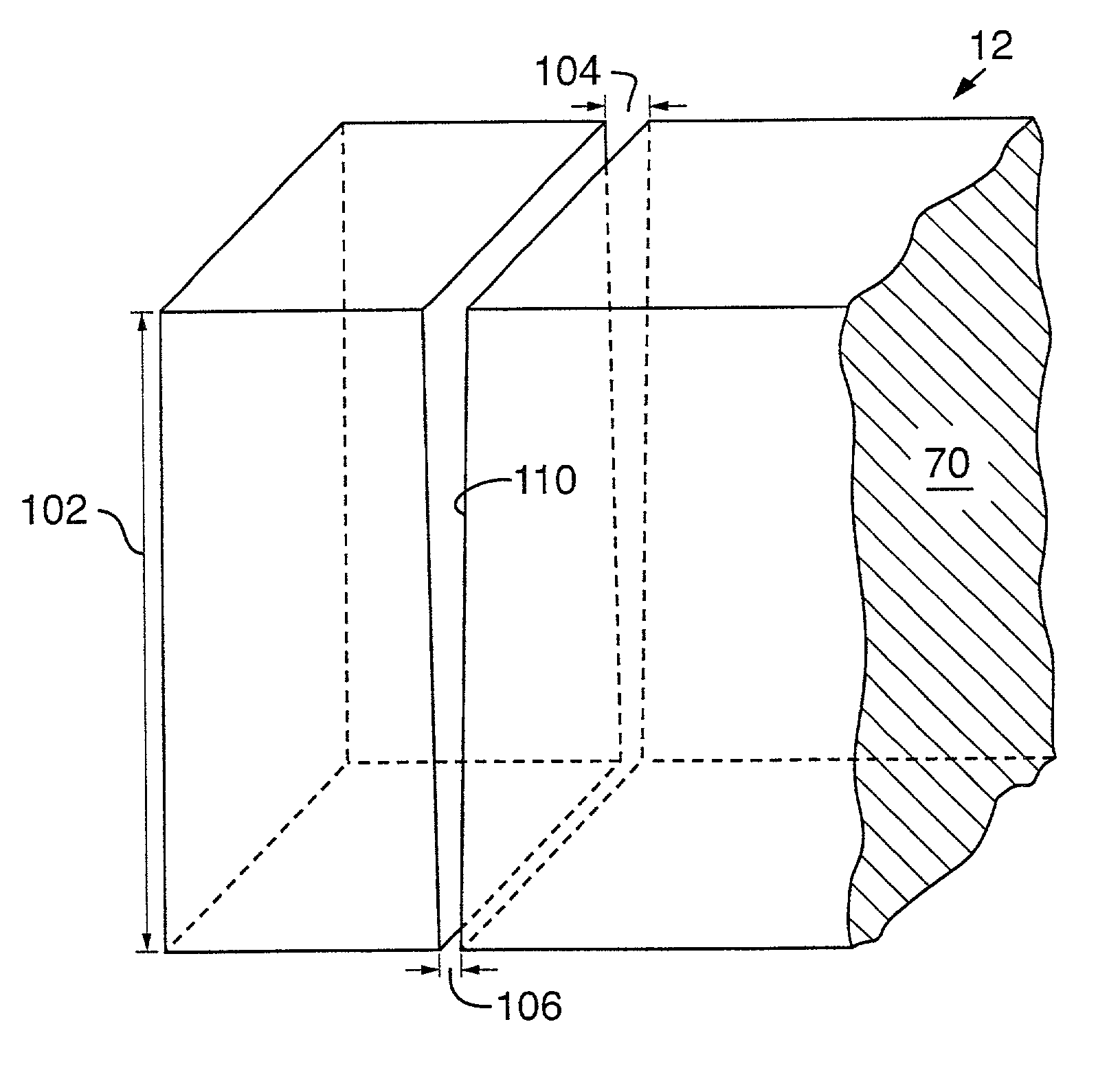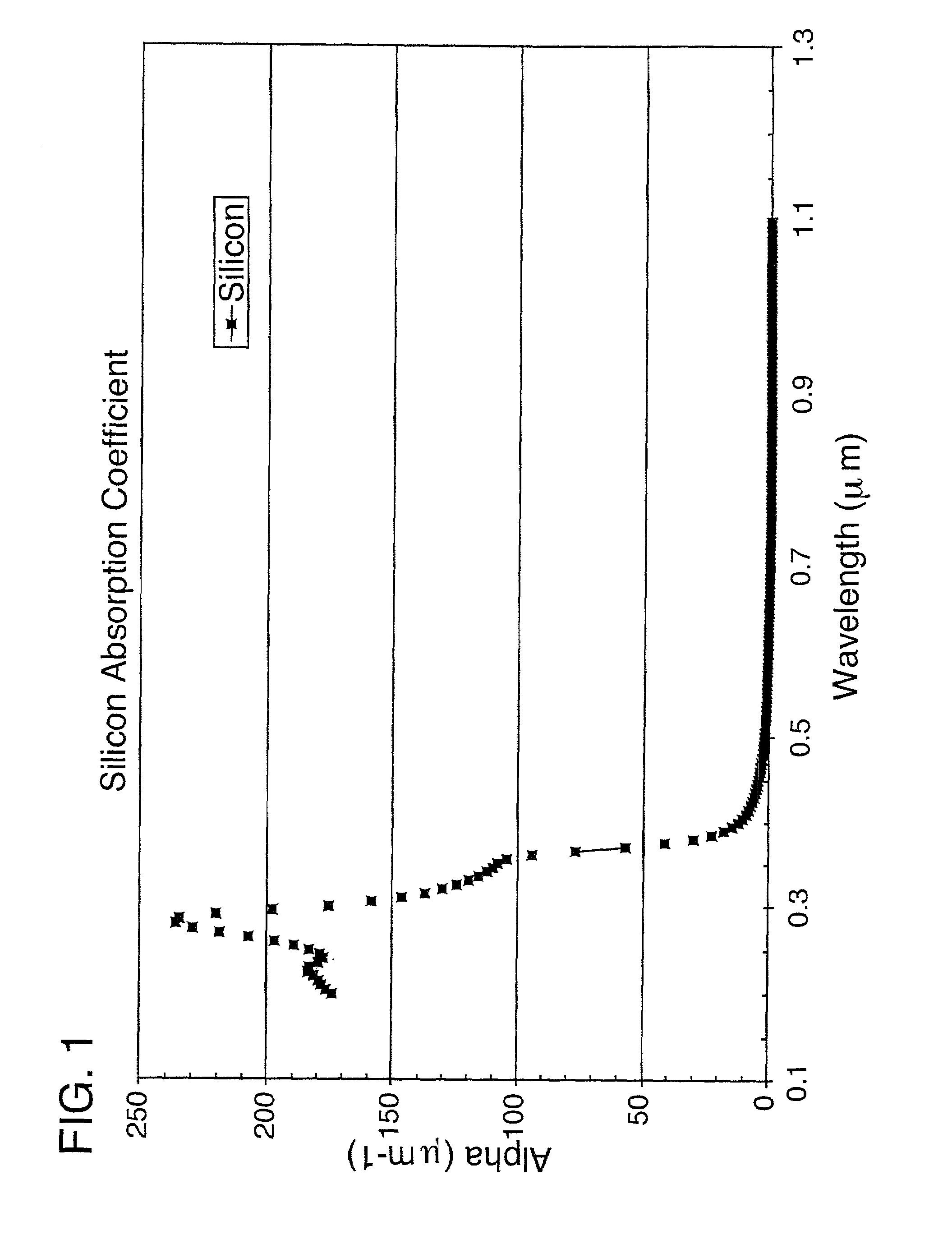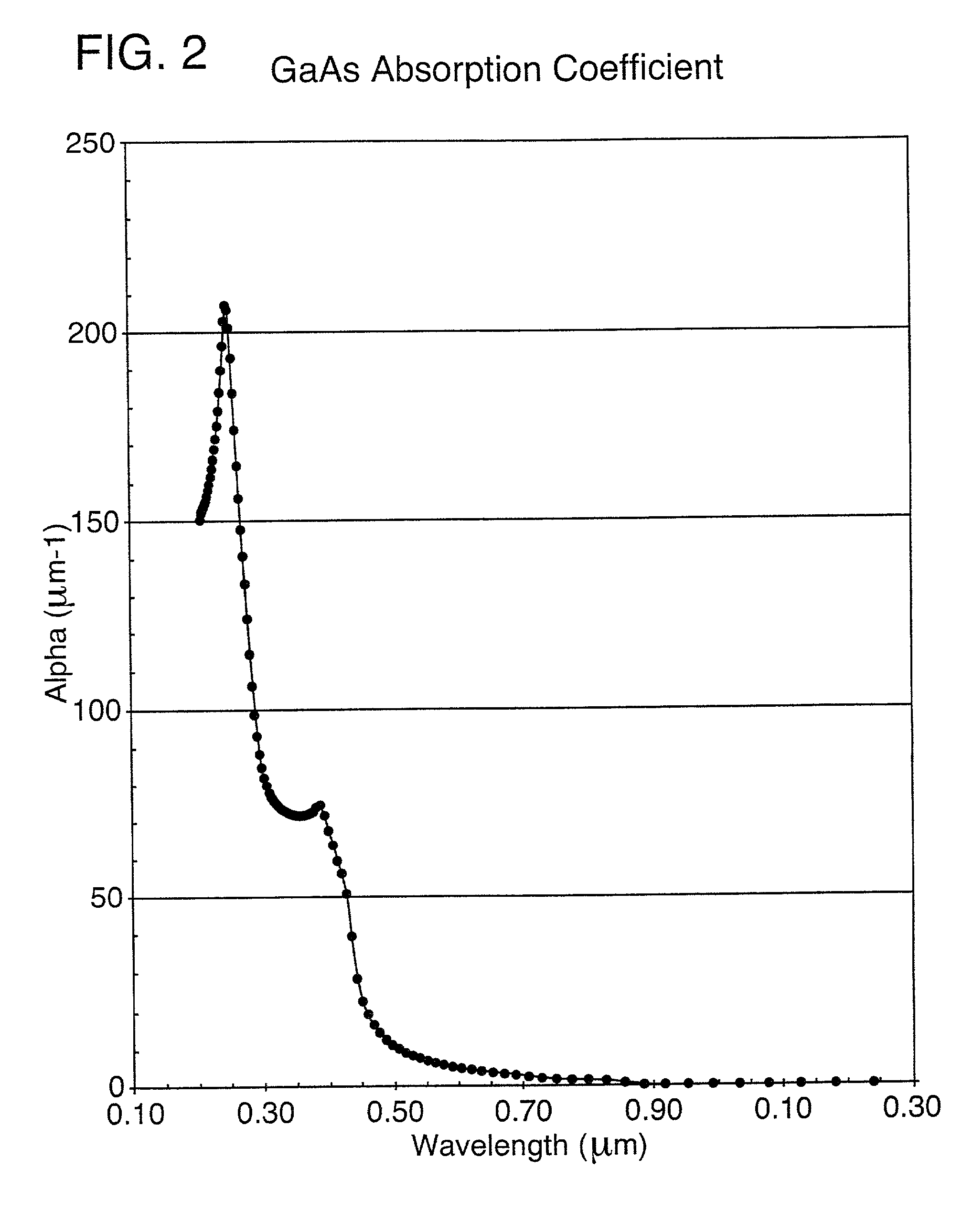Ultraviolet laser ablative patterning of microstructures in semiconductors
a technology of ultraviolet laser and microstructure, which is applied in the direction of manufacturing tools, metal working equipment, welding/soldering/cutting articles, etc., can solve the problems of significant problems encountered in laser dicing processes, holes that are unsuitable for further processing, and holes that are typically observed to be marred, etc., to reduce damage or marring of processed semiconductor workpieces, improve the aspect ratio, and the effect of greater depth
- Summary
- Abstract
- Description
- Claims
- Application Information
AI Technical Summary
Benefits of technology
Problems solved by technology
Method used
Image
Examples
Embodiment Construction
[0033]FIG. 1 displays the optical absorption coefficient of silicon as a function of wavelength. With reference to FIG. 1, silicon exhibits a very sharp rise in the optical absorption at wavelengths in the ultraviolet. The present invention advantageously utilizes laser wavelengths shorter than 390 nm and takes advantage of the increased absorption of silicon in the ultraviolet to efficiently ablate silicon and thereby form a variety of useful patterns or features directly in silicon. The absorption behavior facilitates strongly ablative removal of silicon in the ultraviolet with a greatly reduced thermally affected zone in comparison with features formed using either 532 nm or 1064 nm pulsed output as taught by the prior art.
[0034]FIG. 2 displays the optical absorption coefficient of GaAs as a function of wavelength. With reference to FIG. 2, GaAs exhibits a very sharp rise in the optical absorption at wavelengths in the ultraviolet. The absorption coefficient at 355 nm of GaAs and...
PUM
| Property | Measurement | Unit |
|---|---|---|
| wavelength | aaaaa | aaaaa |
| thick | aaaaa | aaaaa |
| bite size | aaaaa | aaaaa |
Abstract
Description
Claims
Application Information
 Login to View More
Login to View More - R&D
- Intellectual Property
- Life Sciences
- Materials
- Tech Scout
- Unparalleled Data Quality
- Higher Quality Content
- 60% Fewer Hallucinations
Browse by: Latest US Patents, China's latest patents, Technical Efficacy Thesaurus, Application Domain, Technology Topic, Popular Technical Reports.
© 2025 PatSnap. All rights reserved.Legal|Privacy policy|Modern Slavery Act Transparency Statement|Sitemap|About US| Contact US: help@patsnap.com



